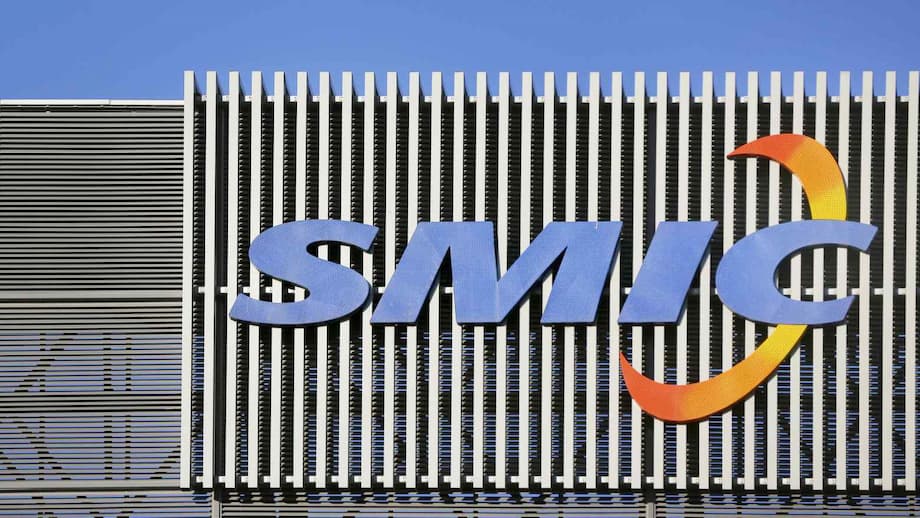The Rise of Chinese Chipmakers: SMIC Leads a New Era
China’s semiconductor industry is undergoing a dramatic transformation. Once heavily reliant on foreign technology, Chinese chipmakers are now rapidly gaining ground, with some companies experiencing tenfold growth in market share over just two years. At the forefront of this shift is Semiconductor Manufacturing International Corporation (SMIC), China’s largest contract chipmaker, which claims that domestic chip companies can now “perfectly replace” their foreign rivals in many sectors. This development is not only reshaping the global semiconductor landscape but also intensifying the ongoing technology rivalry between China and the United States.
SMIC’s co-CEO Zhao Haijun recently highlighted the scale of this change, stating that domestic clients now account for over 50% of SMIC’s 8-inch wafer orders. The surge in demand has led to supply constraints, with SMIC’s production capacity expected to remain tight through at least October. This rapid growth is particularly evident in sectors like power semiconductors and automotive chips, where China is pushing for 100% self-sufficiency.
What’s Driving the Surge in Domestic Chip Demand?
The rise of Chinese chipmakers is fueled by a combination of government policy, market necessity, and global trade tensions. In recent years, the U.S. has imposed strict export controls on advanced semiconductors and chipmaking equipment, aiming to limit China’s access to cutting-edge technology. These restrictions have affected American giants like Nvidia and AMD, whose most advanced chips were banned from sale in China. However, the U.S. recently eased some of these restrictions, allowing certain chips back into the Chinese market. Despite this, SMIC and other domestic firms report that Chinese demand is increasingly being met by homegrown alternatives, reducing the impact of policy reversals.
According to Zhao Haijun, “a growing number of Chinese clients can perfectly replace foreign rivals with domestically produced chips.” In the power-related semiconductor sector, some clients have increased their monthly wafer orders from SMIC tenfold in just two years. This trend is mirrored in the automotive industry, where China aims to use only homemade chips in the near future.
How Is China Building Its Chipmaking Ecosystem?
China’s ambition to become self-reliant in semiconductors extends beyond chip design and manufacturing. The country is investing heavily in every stage of the supply chain, from raw materials and chemicals to advanced manufacturing equipment. This holistic approach is designed to reduce vulnerabilities exposed by foreign export controls and to ensure that Chinese companies can compete globally across the entire semiconductor value chain.
Domestic Alternatives to Foreign Equipment and Materials
One of the biggest challenges for China has been its reliance on foreign chipmaking tools, especially lithography machines used to etch circuits onto silicon wafers. Dutch company ASML is the world’s only supplier of extreme ultraviolet (EUV) lithography machines, which are essential for producing the most advanced chips. Due to export restrictions, Chinese firms cannot access this technology, forcing them to innovate or find alternatives.
Companies like SiCarrier, linked to Huawei, are reportedly developing domestic alternatives to ASML’s tools. While these efforts are still in their early stages and currently limited to less advanced 28nm process technology (compared to the 2nm chips produced by global leaders like TSMC), they represent a significant step toward reducing foreign dependence. The Shenzhen government and major Chinese tech firms are supporting these initiatives, recruiting top talent and investing in research and development.
Similarly, Huawei is building up its capabilities in chipmaking chemicals through its involvement with Zhuhai Cornerstone Technologies. This firm aims to become an end-to-end supplier of crucial materials like photoresists and polishing slurries, which are dominated globally by companies from Japan, the U.S., and Europe. By localizing the supply of these materials, China hopes to insulate its chip industry from future disruptions.
Progress and Remaining Gaps in Technology
Despite these advances, China still faces significant hurdles in matching the most advanced chip technologies. SMIC has demonstrated the ability to produce 7nm chips and is reportedly working toward 5nm, but it remains behind TSMC and Samsung, which are moving toward 2nm mass production. In lithography, China’s domestic equipment is still 15 to 20 years behind the world’s best, limiting its ability to produce the most cutting-edge chips used in artificial intelligence and high-performance computing.
However, in areas like memory chips and chip design, Chinese firms are making notable progress. Yangtze Memory Technologies Corp. (YMTC) leads in 3D NAND flash memory within China, and Huawei’s HiSilicon division has developed AI chips that, in some tests, rival those from Nvidia. While these chips may not yet match the absolute performance of their foreign counterparts, the gap is narrowing.
Geopolitical Tensions and the Global Chip Race
The rapid rise of Chinese chipmakers is both a response to and a driver of escalating geopolitical tensions. The U.S.-China technology rivalry has intensified in recent years, with both sides imposing tariffs, export controls, and investment restrictions. The U.S. aims to protect its technological edge and prevent China from acquiring advanced capabilities that could have military or strategic applications.
In response, China has poured billions of dollars into its semiconductor industry, supporting not only chipmakers like SMIC but also the broader ecosystem of equipment, materials, and talent. This state-led push for self-sufficiency is yielding results, as evidenced by the growing market share of domestic firms and the resilience of companies like SMIC in the face of external pressure.
Impact of U.S. Export Controls and Tariffs
Recent U.S. export controls targeted Nvidia’s H20 and AMD’s MI308 chips, which are used for artificial intelligence and data centers. While the U.S. has since eased some restrictions, allowing these chips to be sold in China again, the long-term impact may be muted. SMIC’s Zhao Haijun noted that strong domestic demand is insulating the company from external shocks, with the financial impact of U.S. tariffs expected to be less than 1.3% of total revenue.
Meanwhile, the Chinese government is scrutinizing foreign chips for security risks. The Cyberspace Administration of China recently summoned Nvidia officials to address concerns about potential backdoors in the H20 chip, reflecting growing sensitivity around data privacy and national security.
Tariffs and the Threat of Decoupling
On the political front, former U.S. President Donald Trump has threatened to impose 100% tariffs on all foreign-made semiconductors unless companies build factories in the U.S. Such measures, if enacted, could further accelerate the decoupling of the global chip industry, pushing China and the U.S. to develop parallel supply chains.
Despite these tensions, American chipmakers like Nvidia and AMD have posted strong financial results, with their stock prices rising significantly over the past year. However, the long-term outlook remains uncertain as both countries continue to invest in domestic alternatives and seek to reduce mutual dependencies.
Can Chinese Chipmakers Truly Rival Global Leaders?
While Chinese chipmakers have made impressive strides, significant challenges remain before they can fully rival global leaders like TSMC, Samsung, and Intel. The most advanced chips, used in smartphones, AI, and high-performance computing, still require manufacturing processes and equipment that are largely out of reach for Chinese firms due to export controls and technological gaps.
However, in many sectors—such as automotive, industrial, and consumer electronics—Chinese chips are now competitive with foreign alternatives. SMIC’s ability to supply large volumes of 8-inch and increasingly 12-inch wafers to domestic clients demonstrates the growing maturity of China’s chip industry. The migration to more advanced wafer technology is ongoing, with SMIC helping clients transition to 12-inch wafers for greater efficiency and performance.
Innovation and the Road Ahead
China’s chip industry is not standing still. Companies like Huawei are investing in next-generation chip design, while others are working to localize every aspect of the supply chain, from chemicals to manufacturing equipment. The government’s support, combined with a vast pool of engineering talent, is driving rapid progress.
Analysts believe that, while China may lag in the most advanced chip technologies for now, the country could close the gap within five to ten years in several key areas. The relentless pace of investment and innovation, coupled with a massive domestic market, gives Chinese firms a strong foundation for future growth.
Broader Implications for the Global Tech Industry
The rise of Chinese chipmakers has far-reaching implications for the global technology industry. As China reduces its reliance on foreign chips and equipment, global supply chains are being reshaped. Companies around the world must adapt to a new reality in which China is both a major market and a formidable competitor.
For multinational chipmakers, the challenge is to balance access to the Chinese market with compliance with export controls and shifting geopolitical winds. For Chinese firms, the focus is on accelerating innovation, building self-sufficiency, and navigating an increasingly complex global landscape.
Ultimately, the competition between Chinese and foreign chipmakers is likely to drive further advances in technology, benefiting consumers and industries worldwide. However, the risk of fragmentation and decoupling remains, with potential consequences for global innovation and economic growth.
In Summary
- Chinese chipmakers, led by SMIC, are rapidly gaining market share and replacing foreign rivals in many sectors.
- Domestic demand for chips in China has surged, with some companies increasing orders tenfold in two years.
- China is investing heavily in localizing the entire semiconductor supply chain, from materials to manufacturing equipment.
- Despite progress, Chinese firms still lag behind global leaders in the most advanced chip technologies.
- U.S.-China tech tensions and export controls are accelerating China’s push for self-sufficiency.
- The global semiconductor industry is being reshaped as China becomes both a major market and a competitor.












